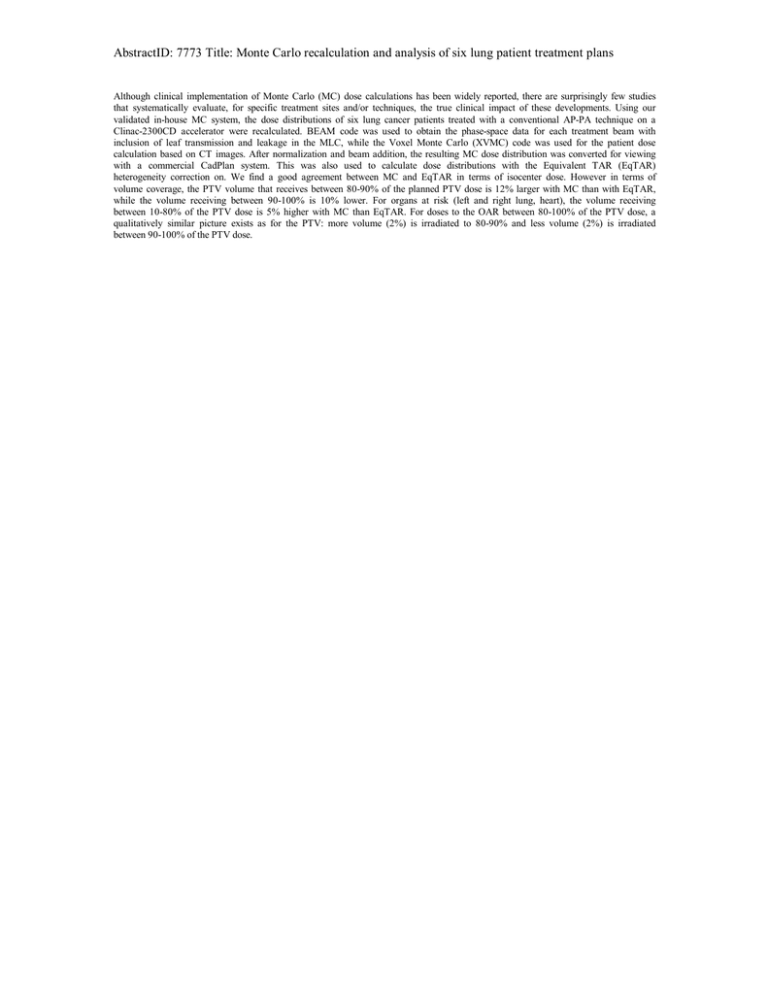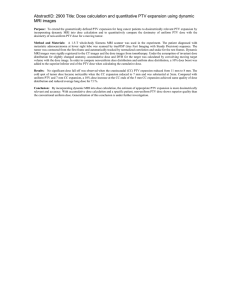AbstractID: 7773 Title: Monte Carlo recalculation and analysis of six...
advertisement

AbstractID: 7773 Title: Monte Carlo recalculation and analysis of six lung patient treatment plans Although clinical implementation of Monte Carlo (MC) dose calculations has been widely reported, there are surprisingly few studies that systematically evaluate, for specific treatment sites and/or techniques, the true clinical impact of these developments. Using our validated in-house MC system, the dose distributions of six lung cancer patients treated with a conventional AP-PA technique on a Clinac-2300CD accelerator were recalculated. BEAM code was used to obtain the phase-space data for each treatment beam with inclusion of leaf transmission and leakage in the MLC, while the Voxel Monte Carlo (XVMC) code was used for the patient dose calculation based on CT images. After normalization and beam addition, the resulting MC dose distribution was converted for viewing with a commercial CadPlan system. This was also used to calculate dose distributions with the Equivalent TAR (EqTAR) heterogeneity correction on. We find a good agreement between MC and EqTAR in terms of isocenter dose. However in terms of volume coverage, the PTV volume that receives between 80-90% of the planned PTV dose is 12% larger with MC than with EqTAR, while the volume receiving between 90-100% is 10% lower. For organs at risk (left and right lung, heart), the volume receiving between 10-80% of the PTV dose is 5% higher with MC than EqTAR. For doses to the OAR between 80-100% of the PTV dose, a qualitatively similar picture exists as for the PTV: more volume (2%) is irradiated to 80-90% and less volume (2%) is irradiated between 90-100% of the PTV dose.

